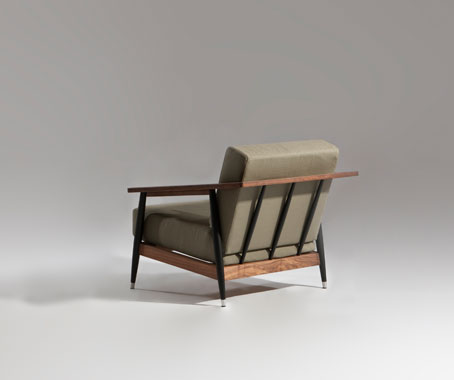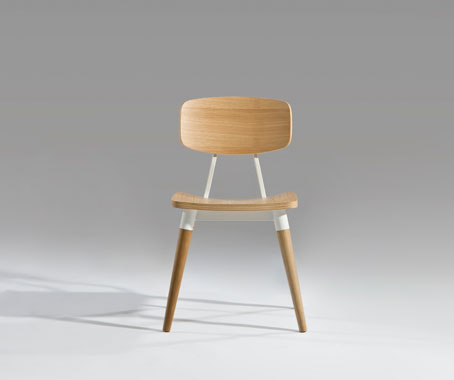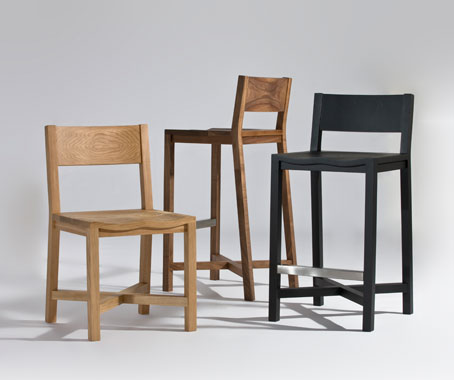Mandi Keighran speaks to Sean Dix about his designs, which explore the grey area between contract and residential.
March 1st, 2012
US-born designer Sean Dix spent 15 years living and working in Milan, one of the design capitals of the world. Three years ago, however, he moved his base to Hong Kong.
“I got stuck in Milan for 15 years,” he says. “Milan’s okay, but it’s not the most interesting place on the planet, and it’s not a very easy place to work.”
Finding that most of his projects were taking place outside of Italy, Dix decided Hong Kong would be his next move. Being based in Hong Kong allows the designer to develop close collaborative relationships with his furniture manufacturers and gives him easy access to a huge Asia-Pacific market.

“It’s two hours away from Guang-Zhou,” he says. “There are lots of opportunities there.”
Last year, the globe-trotting designer partnered with Australian retailer, Zenith. They took three mini-collections from the Dix range which form the basis of the collaboration, comprising primarily solid timber stools, tables and upholstered sofas.
“They brought me in to soften things,” says Dix. “I’ve never really thought of myself as the warm and fuzzy designer.”
Dix’s furniture falls in what he calls “the grey area between contract and residential”. It’s an area of the industry that is gaining increased momentum as the workplace continues to move closer to a more comfortable and human place that is closer to a residential aesthetic – so the collaboration could not have come at a better time.
“Most of the pieces were born as residential pieces,” says Dix. “Zenith understands their application in the workplace.”
The ’Copine’ collection originated with the ’Copine’ chairs, which were inspired by school chairs from the 1940s.

“They’re a little bit feminine,” says Dix. “There’s something sweet about them.”
Which is where the name for the collection comes from – copine means girlfriend in French. The leg detail, where the wood meets the solid frame, is a reference to a girl pulling up her stockings.
Dix has studied interior architecture, and alongside designing furniture he designs retail concepts for luxury brands such as Moschino.
“We design down to the doorknobs,” says Dix of his studio’s approach. Although the retail work is often a lot more exaggerated than Dix’s product work, the two areas do influence each other.
“There are a lot of projects that become diluted, calmed down a bit and become elements in products.” For example, a huge display table gets scaled down to dining table size.
The Dix ’Copine’ collection is available in Australia from Zenith. And, we can expect to see a lot more of this designer in the coming months.
“There’s a real appreciation in Australia for the kind of stuff that I do that you don’t see a lot around the world,” says Dix. “There’s a real sensibility in Australian blood for nice design.”

Sean Dix
seandix.com
Zenith Interiors
zenithinteriors.com.au
INDESIGN is on instagram
Follow @indesignlive
A searchable and comprehensive guide for specifying leading products and their suppliers
Keep up to date with the latest and greatest from our industry BFF's!

It’s widely accepted that nature – the original, most accomplished design blueprint – cannot be improved upon. But the exclusive Crypton Leather range proves that it can undoubtedly be enhanced, augmented and extended, signalling a new era of limitless organic materiality.

The Sub-Zero and Wolf Kitchen Design Contest is officially open. And the long-running competition offers Australian architects, designers and builders the chance to gain global recognition for the most technically resolved, performance-led kitchen projects.

Regardless of what season it is, people tend to spend a huge amount of time indoors – in the USA it is estimated that the population spend approximately 90 per cent of their time inside.
The internet never sleeps! Here's the stuff you might have missed

This new book tells resident stories about how good design creates liveable, high-density homes with socially led developer Neometro.

The latest additions to Tappeti’s Gradient Collection explore the emotive power of colour through a series of hand-knotted and hand-tufted rugs.